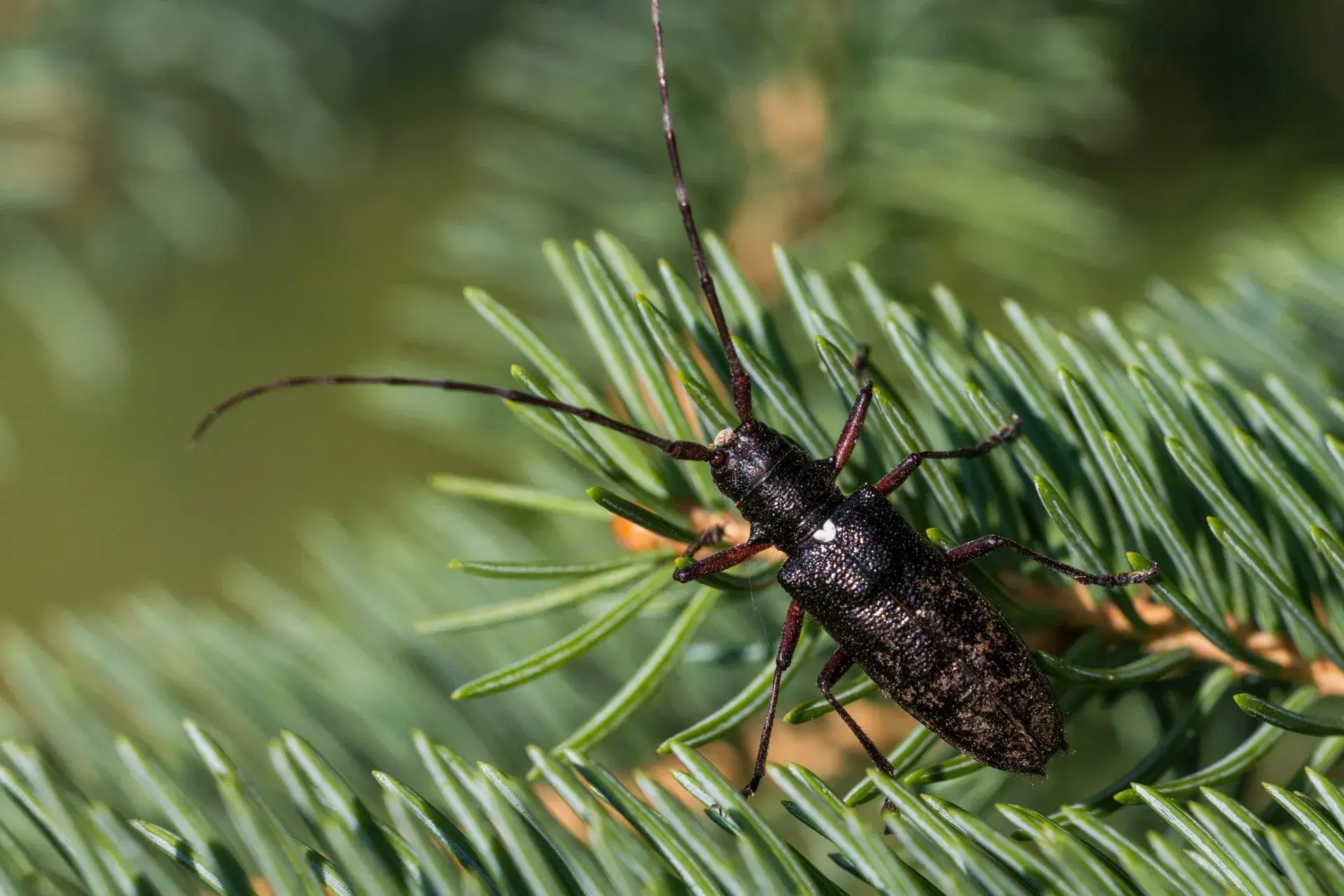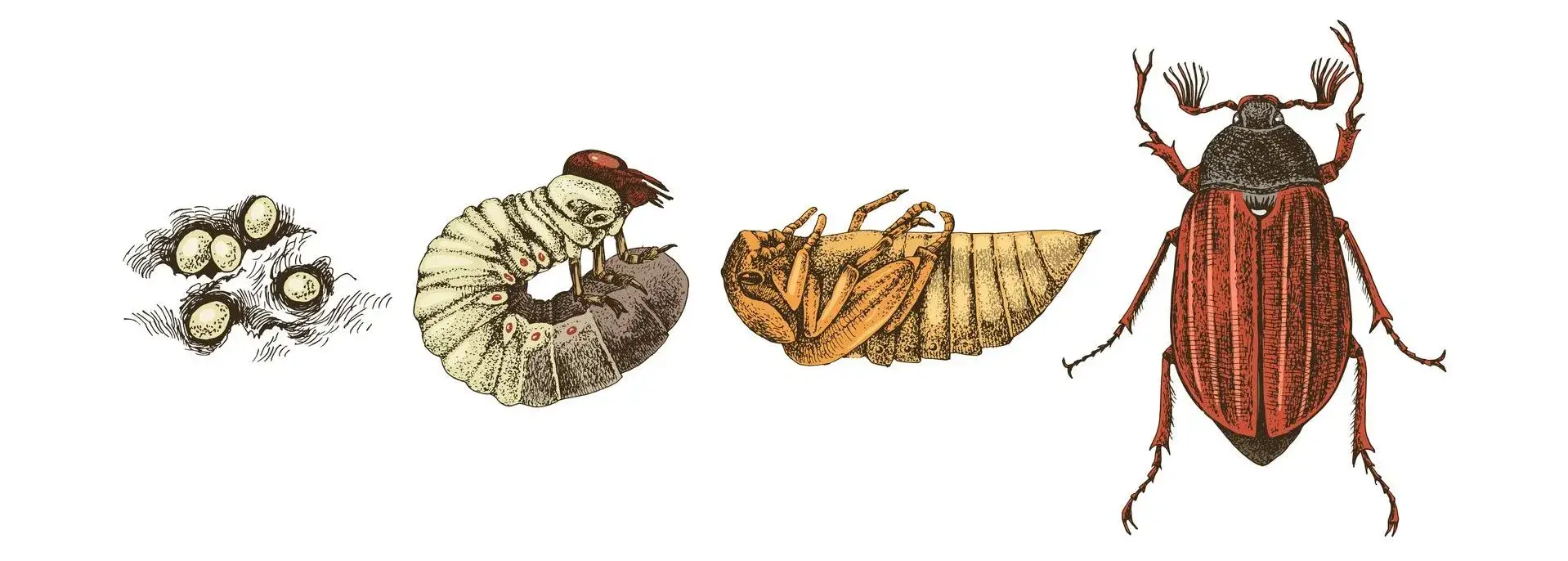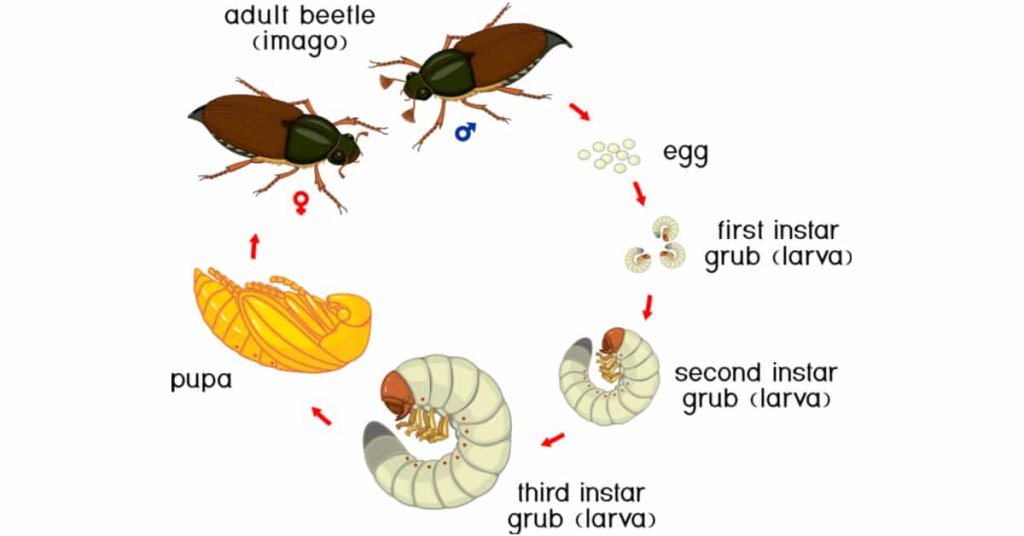Did you know that there are more than 400,000 species of beetles in the world? Yes, you have heard me correct. Their population makes up more than 40% of the insect population that you discover around the planet.
The beetles have a similar life cycle to that of butterflies. They go through several stages of metamorphosis before they turn from grubs to adult beetles, the same way caterpillars turn into butterflies. Similarly, the baby beetle breaks itself through the cocoon or pupae before they turn into an adult beetle. Their lifecycles depict the butterflies yet again.
Here, the grub looks very different from an adult beetle, and the grub arises from a fertilized egg that has been laid by a female beetle after its mating ritual with a male beetle.
Let us unveil interesting aspects that describe the lifecycle of beetles and finally explain how long the life span of a beetle is. Helping you get started here:
Lifespan of Beetles

The lifespan of beetles again differs from species to species. Some varieties of beetles hardly survive for 6 months, while Stag and Rhinoceros beetles live for 3-6 years. During this period, the beetles complete several lifecycles of mating, hatching eggs, larvae period, pupal, and final transformation from the grub to that of the adult beetle.
Overall Know-How on The Life Cycle of a Beetle

Beetles go through 4 different stages concerning their life cycle. The stages are as follows:
- Hatching of eggs post the Mating ritual
- Formation of Larvae
- Pupae
- Adulthood
Let us look at every stage comprehensively:
1. Hatching of Eggs Post the Mating Ritual
The beetles usually lay eggs between spring and early fall as beetles tend to hibernate inside their homes during peak winter months. Therefore, during the spring season, they come out of their habitat to lay their eggs. Usually, the female species lay dozens of eggs or sometimes even hundreds of them.
Apparently, the number of eggs female beetles lay differs from one species to another. The eggs are either white or yellow. Surprisingly, some of the female beetles also give birth internally through their live larvae, and then the little ones pop out. The female beetles lay their eggs upon rotting wood, animal feces, dead leaves, or even across underground soils as they need some organic matter to feed on from the topsoil. It is also interesting to note that although most of the eggs are hatched at once, some of them lay dormant. Once the conditions improve, the eggs from the larvae.
2. Beetle’s Larvae
This is the 2nd stage of a Beetle’s lifecycle. It is named the Beetle’s Larvae Stage’. In fact, this is the biggest stage in the lifecycle of a beetle before it transitions to its next stage. The life cycle can last months or even years, depending on the type of beetle species that we are talking about here. In this stage, the hatched eggs convert into smaller white or green species called grubs.
The grubs must often keep eating to reach their next stage of growth and development. As the grubs keep feeding, the body sizes increase, too. It is also to be noted that the grubs do not have legs or wings. Interestingly, the lifecycle of a beetle is very similar to a butterfly’s.
And finally, the grubs get into an in-phase stage called the instar period. Usually, the grubs must experience at least three-star phases before they enter their third stage, which is called the Pupal stage.
3. The Pupal Stage of The Beetles
The third stage is where the short grubs experience an enormous level of transformation, and this is the period that is the shortest, too. The grubs develop exoskeletons, heads get tightened up, and wings develop too.
During this transition period, the hind legs of the beetle emerge. Usually, the adult beetles have 6-8 hind legs that are formed at the back of the exoskeletons that form during this period.
For some species of beetles, the period lasts weeks, while for some species, the lifecycle can last months or a few years. Once all the features of the beetles develop, the mature adult beetle with wings emerges from the cocoon.
4. Adulthood
This is the final stage of the lifecycle of a beetle. The grub finally emerges into an adult beetle with its hind legs and wings. Adult beetles come to you in various shapes, sizes, and hues. Some of the beetles have an attractive set of hues that attract other beetles into the mating process.
While some of the beetles have horny antenna heads that act as defense mechanisms, few other beetles have other features to help them act against their predators. Mostly, beetles find it easier to group themselves and share spaces within the same clan. The black beetle types belong to this particular category, wherein they group quite easily.
There is one commonality that is found in almost all beetles. It is the presence of a pair of wings that is found at the back of a hard-formed exoskeleton, and the sketch is paired with 6-8 legs. The beetles then mate, and then the lifecycle begins.
Conclusion
The lifespan of beetles starts with the mating process that happens when male and female beetles go through a hard-core process of invading spaces and territories before a successful mating session is carried out.
Once the mating is successful, the female beetles hatch dozens or hundreds of eggs. Not all eggs are hatched at once. Only a few eggs hatch immediately as they get laid, while some of the eggs remain dormant until conditions develop for them to hatch from their larvae. The young ones of the beetle species are called grubs, and these little ones develop without legs or wings.
Some of the beetles have horny antenna heads to protect themselves from predators, and they live a few months to several years on the whole!
Be sure to check out these other posts for more fascinating insights:

